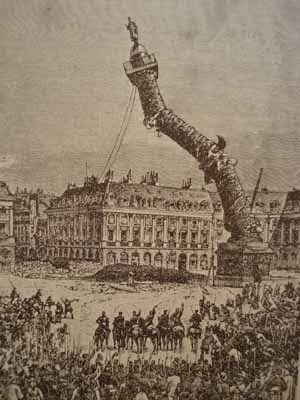
An image of a poppy can be small because it is small. Many poppies can be smudges on a canvas and become a poppy field – remember that only about twenty percent of the connections to the visual cortex come from the retina. We saw that happen in Daubigny's Field of Poppies and Monet's Poppies, Near Argenteuil. Or we can do what Georgia O'Keeffe did and create a large poppy. This large poppy was to make us stop and look at it, sink into the flower and become part if its redness. Georgia O'Keeffe had a way with images and a way with words. Here is what she said about Red Poppy that she painted in 1927.
Nobody sees a flower, really, it is so small. We haven't time - and to see takes time like to have a friend takes time.
If I could paint the flower exactly as I see it no one would see what I see because I would paint it small like the flower is small. So I said to myself - I'll paint what I see - what the flower is to me but I'll paint it big and they will be surprised into taking time to look at it - I will make even busy New Yorkers take time to see what I see of flowers.
...Well, I made you take time to look at what I saw and when you took time to really notice my flower you hung all your own associations with flowers on my flower and you write about my flower as if I think and see what you think and see of the flower - and I don't.
Years ago in 1996 I bought many sheets of the commemorative stamp that the USPS had issued in honor of Georgia O'Keeffe. I used them for everything, hoping to spread the joy of this painting to anyone who who would come in contact with those envelopes, my bills, my letters, my cards, even my postcards. Here then is a field of red poppies thanks to the USPS and Georgia O'Keeffe.




























